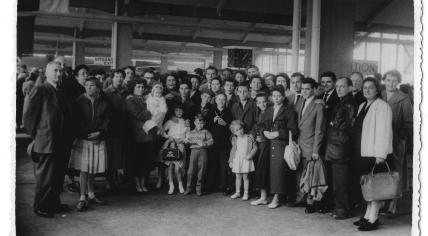
Decades of Holland America Line passenger manifests go online
Passenger lists containing the names of over 2 million people who traveled on the Holland-America Line between 1900 and 1969 are now online for the first time. The boat connection was the primary means of transport for people between Europe and America for years until it succumbed to competition from aviation and started focusing more on cruises. The Rotterdam City Archives and the Center for Family History digitized these passenger lists in a project that took three years and involved making around 150,000 scans.
The line was mostly known for its connection between Rotterdam and New York. The oldest surviving list is from 3 May 1900 and starts with a passenger who left for New York. The last passenger departed on a freighter on 29 December 1060 for New Orleans. The passenger lists revealed some interesting information. Babies were born on board the ships, people stowed away, and once a dog traveled on its. Famous passengers included theoretical physicist Albert Einstein, doctor Aletta Jacobs, resistance hero George Maduro, and writer Godfried Bomans.
The Holland-America Line transported business travelers, tourists, and migrants to and from America from 1873 until World War II. During the war, the Allies used the ships to transport soldiers, weapons, and fuel. The first ship with "ordinary" passengers to depart from Rotterdam after the war was the Westerdam on 28 June 1946. That ship carried mainly migrants from all over Europe searching for a better future in America.
The Holland-America Line faced increasing competition from aviation. The large steamships were no longer profitable, and the trip by boat took much longer than flying. The ships were, therefore, increasingly used for cruises. In 1971 the company discontinued the passenger service. In 1978 the headquarter of the Holland-America Line moved to New York, after which the company increasingly focused on cruises in the Caribbean and the Mediterranean.
